Standard Deviation serves as a cornerstone in trading due to its multifaceted advantages that can significantly impact decision-making processes and risk management strategies.
From evaluating market dynamics to fine-tuning entry and exit points, standard deviation offers traders a valuable lens through which to interpret asset behavior and inform trading strategies.
The 7 key advantages of standard deviation offer a comprehensive toolkit for traders seeking to navigate markets with precision and confidence, providing insights that can enhance trading performance and optimize risk assessment.
Market Evaluation With Standard Deviation
When evaluating markets, the use of standard deviation serves as a crucial tool for assessing asset volatility and risk by quantifying the dispersion of prices from their average values.
Standard deviation is a key measure that helps traders and investors understand the level of risk associated with an investment. By analyzing historical price data, standard deviation provides valuable insights into the market's volatility, enabling market participants to make informed decisions.
Traders rely on standard deviation to identify potential price extremes and adjust their trading strategies accordingly. A higher standard deviation indicates greater market volatility, suggesting larger price fluctuations and increased risk. Conversely, a lower standard deviation signifies more stable price movements and lower risk levels.
Understanding market behavior through standard deviation empowers traders to manage risk effectively, set realistic investment targets, and adapt their trading approaches to changing market conditions.
In essence, standard deviation plays a vital role in market evaluation, helping market participants navigate the complexities of trading and investment decisions.
Calculating Risk Using Standard Deviation
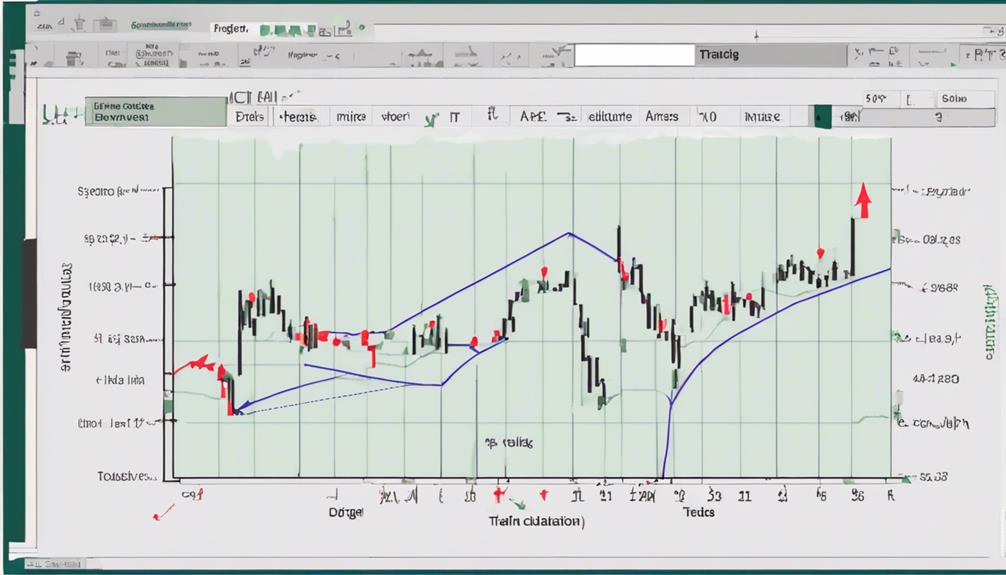
In the realm of trading and investment analysis, the calculation of risk using standard deviation stands as an essential method for quantifying the potential volatility and uncertainty associated with market movements. Standard deviation, derived from the square root of the variance, serves as a crucial risk measurement tool by indicating the range of data points around the mean in a dataset.
A high standard deviation suggests higher volatility and risk, signifying larger potential price fluctuations within a given period. Conversely, a low standard deviation implies lower volatility and risk exposure. Investors utilize standard deviation to set stop-loss orders effectively and determine appropriate risk levels within their trading strategies.
Diversification Strategies With Standard Deviation
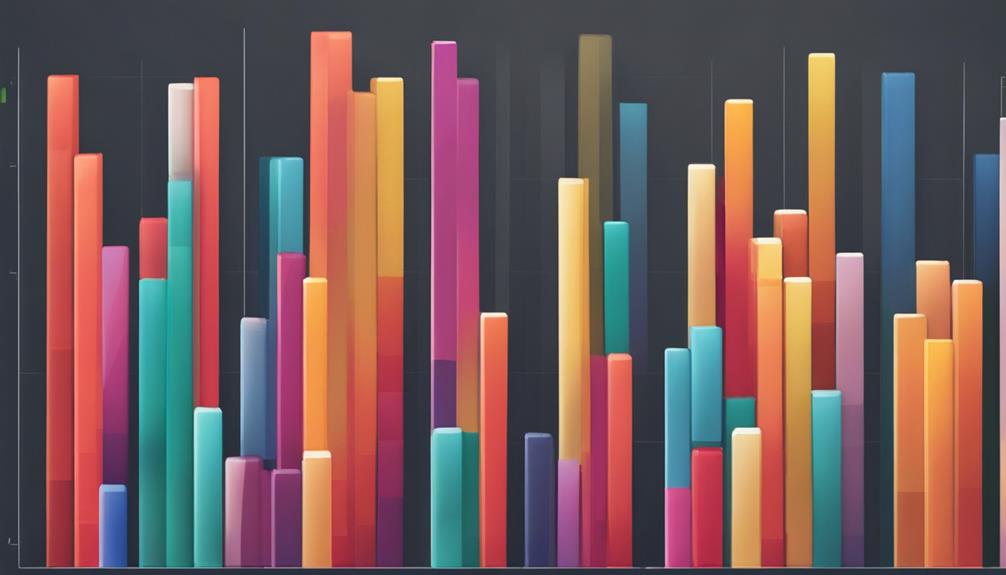
Diversification strategies utilizing standard deviation facilitate a comprehensive approach to risk management in portfolios. By analyzing the standard deviations of various assets, investors can gauge the volatility and potential risks associated with each component, aiding in constructing well-balanced portfolios.
Incorporating standard deviation in diversification strategies allows for a more precise assessment of portfolio volatility and helps in optimizing risk-return profiles efficiently.
Risk Management Techniques
Utilizing standard deviation as a foundational risk management tool in portfolio diversification strategies offers investors a methodical approach to spreading risk and enhancing overall investment stability. By calculating standard deviation, investors can measure the volatility of individual assets and the overall portfolio volatility, thus aiding in the identification of uncorrelated assets.
Diversification strategies based on standard deviation help in minimizing risk exposure and maximizing returns by creating a portfolio with assets that do not move in the same direction under similar circumstances. This approach to risk management techniques ensures more stable and consistent investment performance over time, as it allows for a more balanced distribution of risk across various assets, ultimately leading to improved portfolio resilience.
Portfolio Volatility Analysis
When analyzing portfolio volatility through the lens of standard deviation, investors gain a comprehensive understanding of how different assets contribute to the overall risk profile. Utilizing diversification strategies with standard deviation offers several key advantages:
- Diversification with standard deviation helps reduce portfolio risk by spreading investments across different asset classes.
- Analyzing portfolio volatility using standard deviation allows investors to understand how individual assets contribute to overall risk.
- Standard deviation aids in optimizing portfolio allocation by balancing high and low volatility assets for better risk-adjusted returns.
Utilizing Volatility Measures
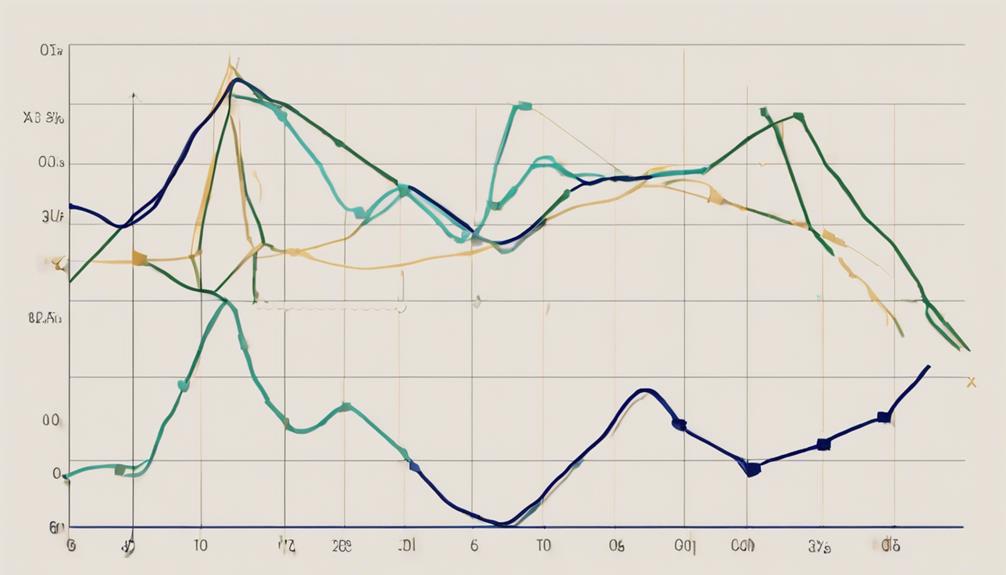
Assessing market volatility through standard deviation provides traders with crucial insights into potential price movements and associated risks. Standard deviation, a key tool in volatility measures, quantifies the extent of price variability around the mean. This metric is instrumental in determining optimal stop-loss levels and profit targets, enabling traders to make well-informed decisions.
By understanding market volatility using standard deviation, traders can adapt their trading strategies to suit prevailing conditions effectively. A high standard deviation signifies increased price swings and risk, prompting traders to adjust their risk management strategies accordingly. Conversely, a low standard deviation indicates stability and lower risk in trading, allowing for a more conservative approach.
Utilizing standard deviation for volatility measures is essential for enhancing trading precision, fine-tuning risk management techniques, and maximizing profitability in the dynamic world of financial markets.
Precision in Stop Loss Placement
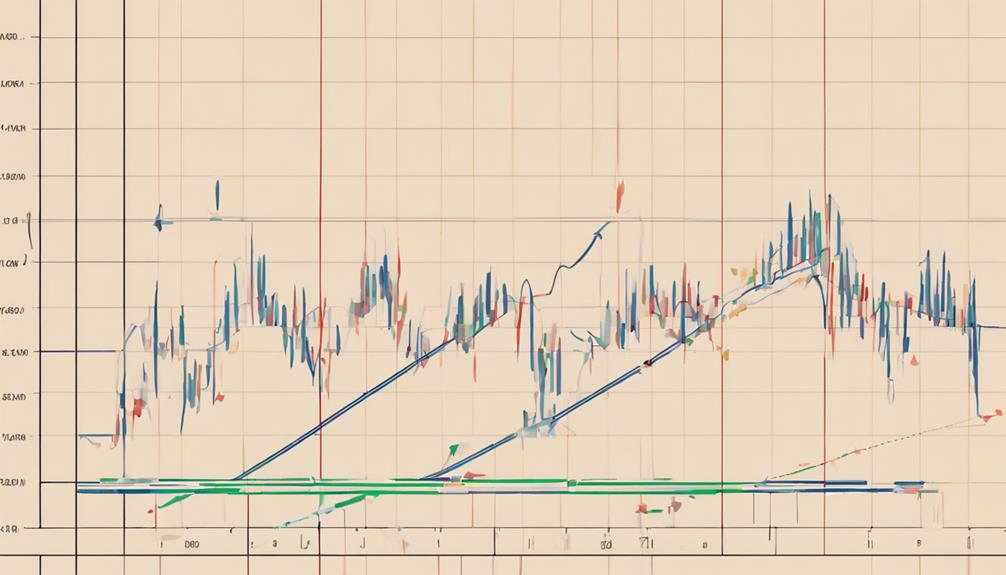
Precision in stop-loss placement is a critical component of effective risk management strategies for traders seeking to safeguard their trading capital amidst market volatility. Utilizing standard deviation in determining stop-loss levels offers traders the advantage of precise risk mitigation through the following:
- Historical Volatility Analysis: By considering standard deviation, traders can set stop-loss levels based on historical price fluctuations. This approach helps in identifying potential risks and adjusting the stop-loss distances accordingly.
- Strategic Risk Management: Precision in stop-loss placement is crucial for protecting trading capital. Setting stop-loss orders based on standard deviation ensures that losses are minimized, thereby enhancing overall risk management strategies.
- Adaptation to Market Volatility: Standard deviation allows traders to adjust stop-loss distances in response to varying market volatility. This adaptability ensures that stop-loss orders are strategically positioned to account for price variability, ultimately improving trading outcomes.
Enhancing Trading Strategies With Bollinger Bands
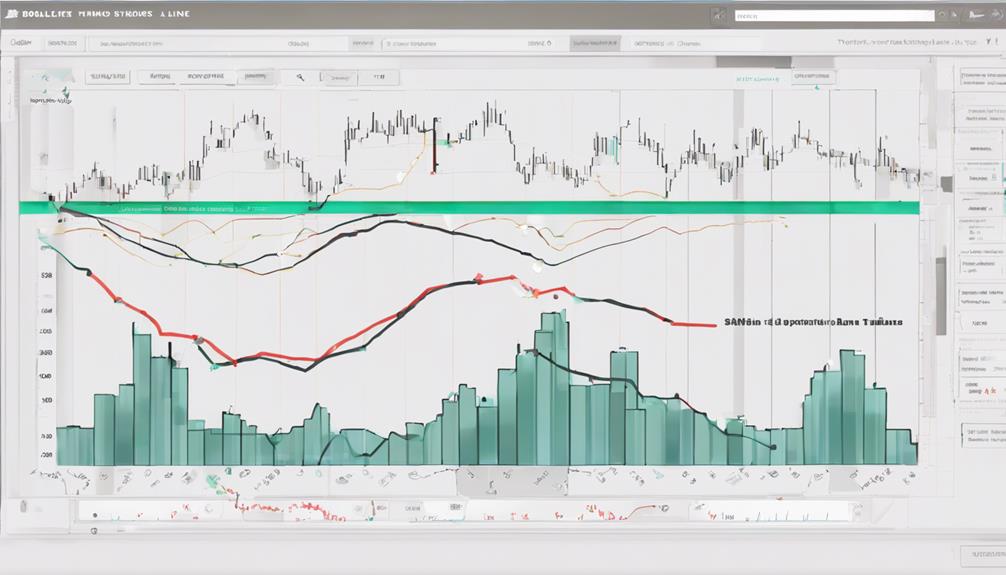
Utilizing Bollinger Bands in trading strategies enhances analytical capabilities by incorporating dynamic price bands around a moving average. This tool utilizes standard deviation to adapt to market volatility and identify potential entry and exit points.
Bollinger Bands are a technical analysis tool that helps traders gauge market volatility and potential price reversal points. By dynamically adjusting to market conditions through standard deviation, these bands offer insights into overbought and oversold levels, aiding traders in decision-making.
The middle band, representing the moving average, serves as a baseline, while the upper and lower bands indicate potential resistance and support levels, respectively. Incorporating Bollinger Bands into trading strategies provides a systematic approach to analyzing price movements and trend strength, offering a structured framework for making informed trading decisions.
Traders can leverage Bollinger Bands to enhance their strategies by recognizing key levels and patterns that signal potential trading opportunities, thereby increasing the effectiveness of their overall trading approach.
Detecting Market Trends With Standard Deviation
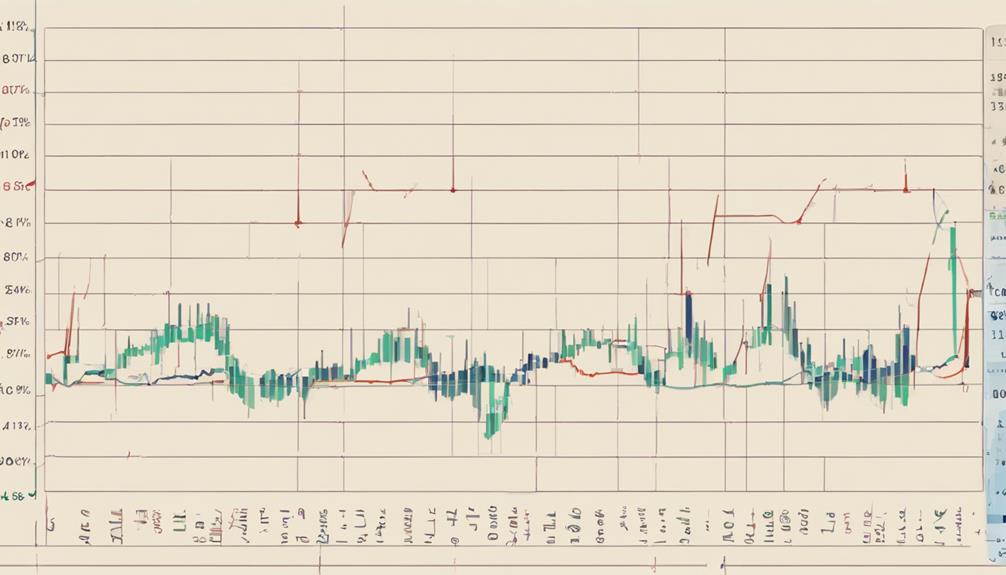
Incorporating standard deviation into trading analysis enables traders to effectively detect market trends by measuring price dispersion from the mean average, providing valuable insights into market volatility and potential trend changes.
Key Points:
- Measuring Volatility: Standard deviation helps gauge the level of volatility in the market, with higher values suggesting more significant price fluctuations, indicating potential market trends.
- Historical Price Movements: Traders utilize standard deviation to analyze historical price data, identifying patterns that signify potential trend changes and shifts in market sentiment.
- Decision Making: Changes in standard deviation values can signal the strength of trends, assisting traders in making informed decisions about entering or exiting trades based on the stability and momentum of the identified trends.
How Can Standard Deviation Help in Maximizing Trading Profits?
When developing a maximizing trading profits strategy, understanding standard deviation can be crucial. It helps traders measure the volatility of an asset’s price and assess the potential risk and return. By incorporating standard deviation into their analysis, traders can make more informed decisions and maximize their profits.
What Are the Advantages of Using Standard Deviation in Market Analysis and Trading?
When it comes to market analysis and trading, standard deviation in market analysis serves as a crucial tool in measuring the volatility of a stock or market. By using standard deviation, traders and investors can better assess potential risks and make more informed decisions about their investment strategies.
Frequently Asked Questions
What Are the Advantages of Using Standard Deviation?
Standard deviation provides a quantitative measure of variability around the mean, aiding in assessing asset volatility and market behavior. It allows for risk management, decision-making, and setting effective stop-loss and take-profit orders in trading strategies.
What Is the Use of Standard Deviation in Trading?
Standard deviation in trading serves as a crucial tool for assessing market volatility, establishing risk management strategies, and determining optimal entry and exit points. By measuring price fluctuations around the mean, it aids traders in making informed decisions.
Which of the Following Is an Advantage of the Standard Deviation?
An advantage of standard deviation is its ability to quantify volatility, providing traders with a clear measure of risk. This statistical tool helps in assessing potential price fluctuations, setting realistic stop-loss and take-profit levels, and informing strategic risk management decisions.
Why Do We Need Standard Deviation in Investing?
Standard deviation in investing is essential as it quantifies risk by measuring price volatility. It provides a clear understanding of potential returns, aiding in decision-making. This statistical tool plays a crucial role in risk assessment and portfolio management.
Conclusion
In conclusion, standard deviation serves as a powerful tool in trading, offering advantages such as market evaluation, risk calculation, diversification strategies, volatility measures, precise stop loss placement, and trend detection.
By leveraging these benefits, traders can enhance their trading strategies, optimize risk management, and make informed decisions.
Standard deviation stands as a steadfast support in navigating the complexities of the market, providing traders with a reliable framework for success.
